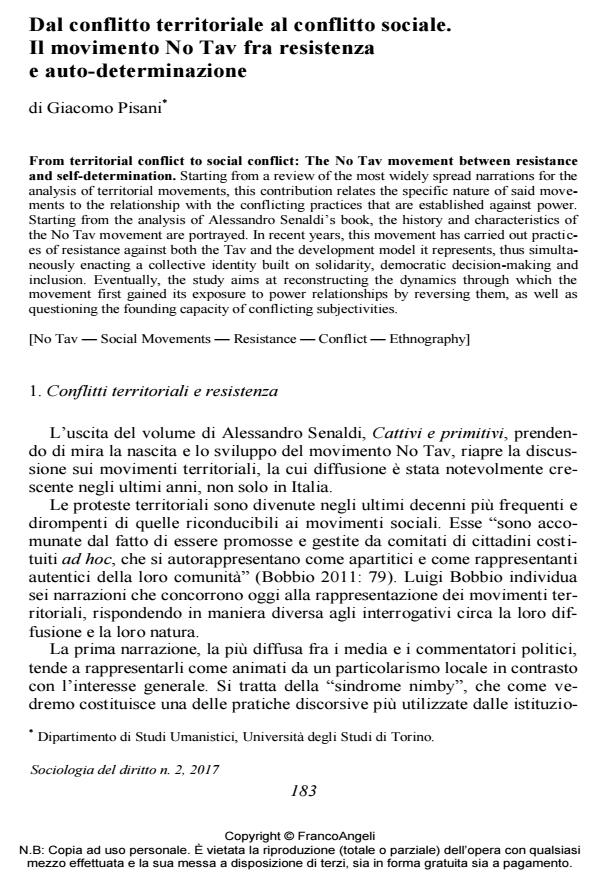From territorial conflict to social conflict: The No Tav movement between resistance and self-determination
Journal title SOCIOLOGIA DEL DIRITTO
Author/s Giacomo Pisani
Publishing Year 2017 Issue 2017/2
Language Italian Pages 9 P. 183-191 File size 198 KB
DOI 10.3280/SD2017-002009
DOI is like a bar code for intellectual property: to have more infomation
click here
Below, you can see the article first page
If you want to buy this article in PDF format, you can do it, following the instructions to buy download credits

FrancoAngeli is member of Publishers International Linking Association, Inc (PILA), a not-for-profit association which run the CrossRef service enabling links to and from online scholarly content.
Starting from a review of the most widely spread narrations for the analysis of territorial movements, this contribution relates the specific nature of said movements to the relationship with the conflicting practices that are established against power. Starting from the analysis of Alessandro Senaldi’s book, the history and characteristics of the No Tav movement are portrayed. In recent years, this movement has carried out practices of resistance against both the Tav and the development model it represents, thus simultaneously enacting a collective identity built on solidarity, democratic decision-making and inclusion. Eventually, the study aims at reconstructing the dynamics through which the movement first gained its exposure to power relationships by reversing them, as well as questioning the founding capacity of conflicting subjectivities.
Keywords: No Tav - Social Movements - Resistance - Conflict - Ethnography
Giacomo Pisani, Dal conflitto territoriale al conflitto sociale. Il movimento No Tav fra resistenza e auto-determinazione in "SOCIOLOGIA DEL DIRITTO " 2/2017, pp 183-191, DOI: 10.3280/SD2017-002009